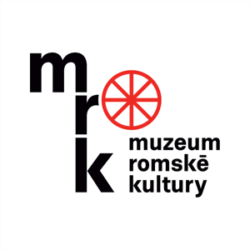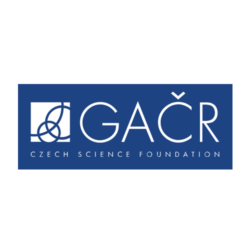Mária Danielová
Mária Danielová (born 1929, Podunajské Biskupice, Bratislava district), née Botlóová was from a privileged blacksmith's family.
-
Testimony abstract
Her mother's great-grandfather was German, a vagrant, she added; her mother was Romani and came from the village of Vysoká pri Morave in southwestern Slovakia. Maria Danielová's father, surnamed Botló, was the illegitimate child of a non-Romani baker and a Romani woman from the settlement[1] and grew up with an aunt; she said that since her father's mother did not have a husband, she could not raise him. Maria Danielová's father learned the blacksmith's trade from the Roma from the settlement when he helped blow the bellows.[2] Other male relatives of Maria Danielová were also blacksmiths – her brothers and Agnes Horváthová's grandfather. Her father was a vajda (authority) in the settlement, she said, because he was did not have a criminal record and behaved decently. She referred to her parents as real Roma, but mentioned two or three Roma families who did not want to work and were not respected by the others.
Mária Danielová was one of five children, having four brothers. She went through eight grades at school; like the other Roma children she went to a Hungarian school. The Slovak children went to a Slovak school; she said they were the children of higher-ranking people – teachers, gendarmes, postmasters.
After the Germans arrived, she was no longer allowed to go to school. The Roma in the village were banned from going to the cinema or to entertainments. But when the Germans saw that someone was of a better standing, they let them in, unlike those who were ugly or dirty, she said. The Germans decided that Maria Danielová's father would supervise the other Roma in the settlement, of which there were about 300, to keep order. The Germans were not in the village, but only travelled there from Bratislava twice a week to check on the settlement. The so-called “better Roma” who lived in the village, like the Daniel family, were not subjected to searches. Thanks to the Germans, Mária's father had a well-paid job, making nails for climbing boots, for example.[1] She said they had never had it so good; they received rations from the Germans, chocolate, flour, sugar, poppy seed. On the other hand, the Roma who did not work and were dirty were beaten by the Germans and sent to the camp. Danielová remembered one family with twelve or thirteen children that was taken to Vienna by the Germans; three members of the family did not return after the war.[2] She also mentioned the partisans, which included her brother, a cousin and his friend. They were captured in Humenné and airlifted to Dresden; all three returned from there after the war.
Danielová’s father gradually worked his way up to become an art blacksmith at the Kovodružstvo (blacksmiths’ cooperative) which was established after the war, and the family was well off thanks to his earnings. Other Roma worked with him – Botló, Baňák, Šlés, Daniel, Šarközi. The original settlement had ceased to exist, and the Roma there had been given apartments.
How to cite abstract
Abstract of testimony from: HÜBSCHMANNOVÁ, Milena, ed. “Po židoch cigáni.” Svědectví Romů ze Slovenska 1939–1945.: I. díl (1939–srpen 1944). 1. Praha: Triáda, 2005. ISBN 80-86138-14-3, 163-168 (ces), 169-172 (rom). Testimonies of the Roma and Sinti. Project of the Prague Forum for Romani Histories, https://www.romatestimonies.com/testimony/maria-danielova (accessed 10/16/2025) -
Origin of Testimony
The interview took place in 1994, thanks to the initiative of Agnesa Horváthová, a Roma journalist from Bratislava, who took the editor to her distant relative Mária Danielová. Mária Danielová also talked in the interview about relations between various Roma groups and the ability to get along with Roma in Romania and Yugoslavia, but only passages about the war were included in the book. To some extent, the editor edited their sequence.
In the 1960s, Podunajské Biskupice was one of the largest Roma settlements in Slovakia. The lavish villas were inhabited mainly by Romani art blacksmiths, members of a blacksmiths’ cooperative whose products represented Slovak folklore at Expo ’67 in Montreal. Blacksmiths from here travelled all over Slovakia and restored decorative grilles in churches, castles and other cultural monuments, for example. At the far end of the settlement, poorer Roma lived in less ostentatious houses.
In the 1960s, the local Roma used Romani as their primary means of communication, but the older generation in particular also spoke Hungarian, Slovak or German. In the interview, Danielová switches from Hungarian Romani to "her" Slovak, which is phonetically indicated in the transcript of the original version of the recording; in the Czech part, the editor translated and incorporated these expressions into the text. In Romani, Danielová used the familiar form of address with the interviewer; in Slovak she addressed her formally as “Vy” (you) – this cultural peculiarity was preserved in the transcript of the interview.
-
Where to find this testimony




